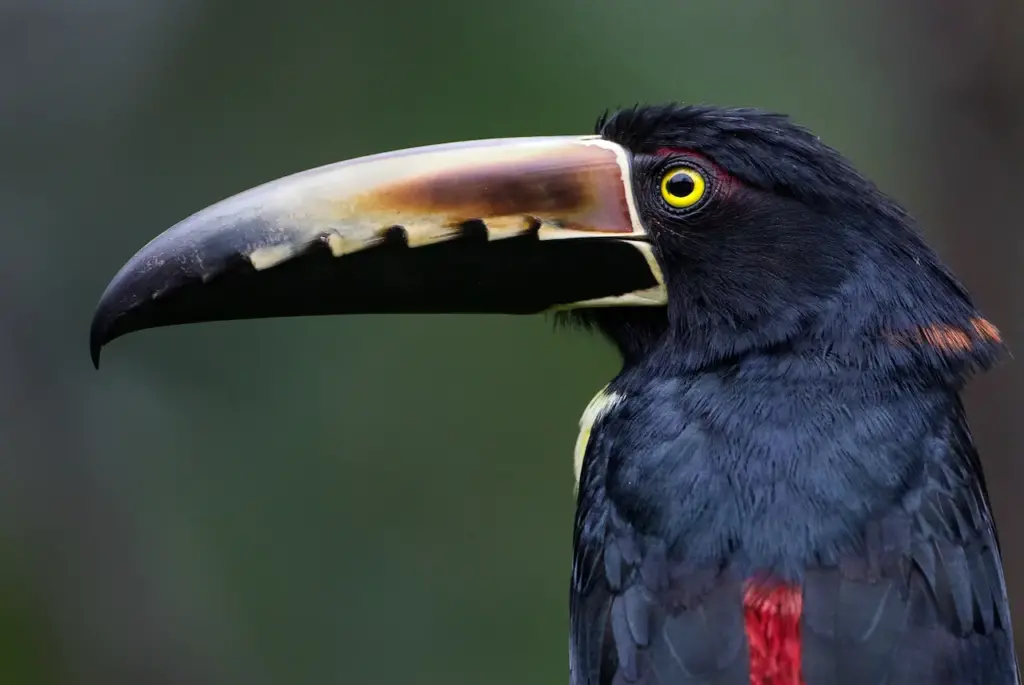The Collared Aracaris, Pteroglossus torquatus, is a South American toucan that breeds from southern Mexico to Panama; as well as Ecuador, Colombia and Venezuela.
Small flocks, usually consisting of 6-15 birds, move through the forest with a rapid direct flight.
[ez-toc]

Aracaris generally roost socially throughout the year. Up to five adults and their fledged offspring sleep in the same hole with their long tails folded over their backs.
Description
The Collared Aracari is brightly marked and has a large bill. The adult is typically 41 cm long and weighs 230 g.
Both males and females look alike. Th head and chest are black. The upper parts are olive green apart from a red rump and upper tail. They have a reddish collar on the neck. The underparts are bright yellow, with a round black spot in the centre of the breast and a red-tinted black band across the belly. The thighs are chestnut.
The bare facial skin is black, turning ruddy behind the yellow eye. The upper beak is dull yellow, marked with a black saw-tooth pattern on the cutting edge, and a black tip. The lower beak is black. The legs are green.
Immature Collared Aracaris are much duller. The head is sooty-black head. The upperparts are brownish green. The red rump and yellow underparts are paler, and the breast spot, belly band and bill pattern are indistinct.
Similar Species: The Pale-mandibled Aracari has a black horizontal stripe on the lower chest, while the Collared Aracari has a mostly red stripe.
Calls / Vocalizations
The call of the Collared Aracari is a loud, sharp pseek, or peeseek.

Reproduction
The Collared Aracari is a common resident breeder in lowland forests and slightly more open woodland.
They typically nest in trees with appropriate hollows, most of which are previously made by woodpeckers. Other hollows are the result of a branch break and ensuing rotting of the heart wood from rain over a period of time.
Both the male and female share the incubation and chick rearing duties. The average clutch consists of white eggs. The eggs are incubated for about 16 days. The newly hatched chicks are blind and naked with short bills and thick pads on their heels to protect them from the rough floor of the nest.
Both parents, as well as their previous offspring and/or possibly other adults, feed the chicks. The young fledge after about 6 weeks. The adults continue to feed them for several weeks after fledging.
The aracaris are unusual for toucans in that they roost socially throughout the year, up to six adults and fledged young sleeping in the same hole with tails folded over their backs.



